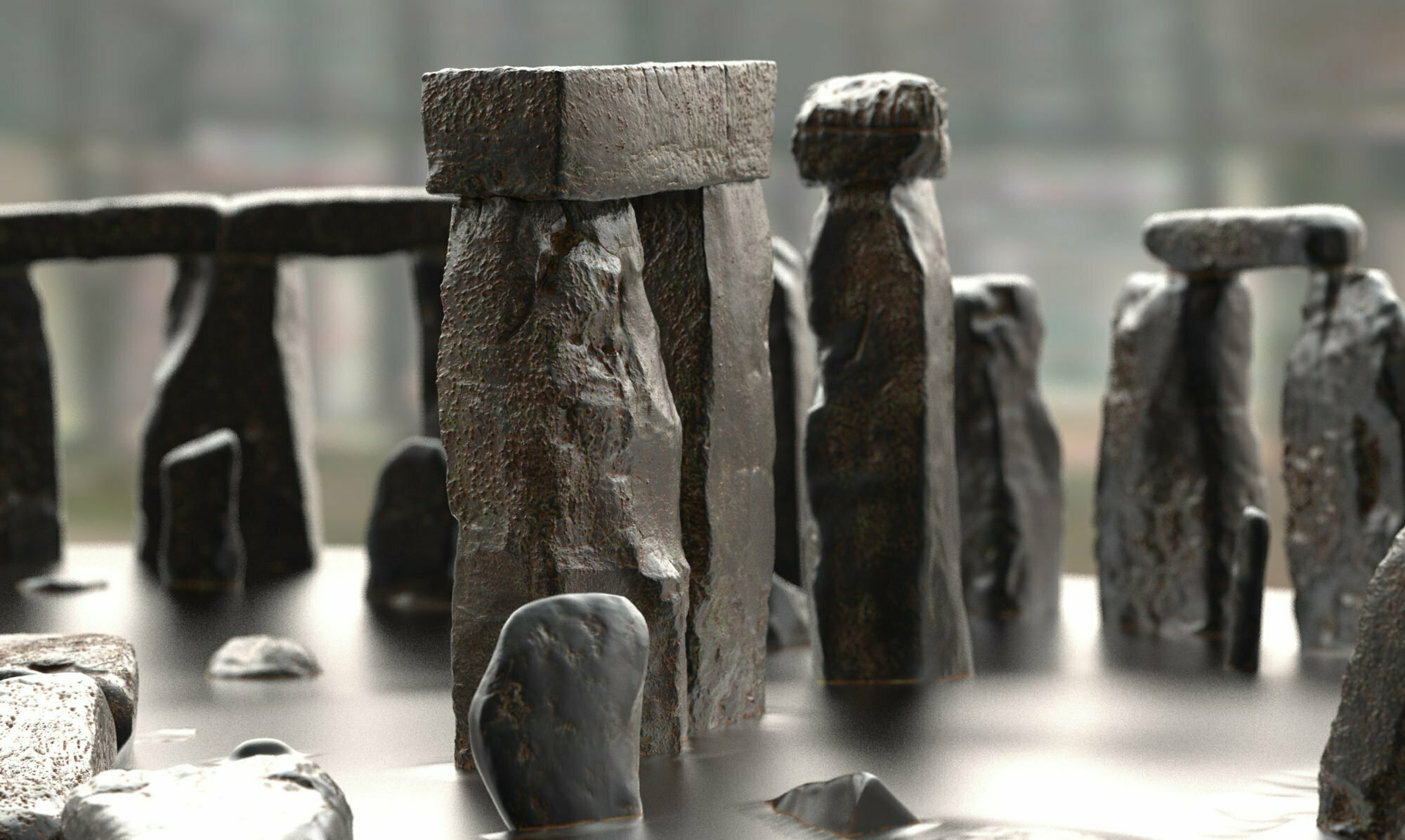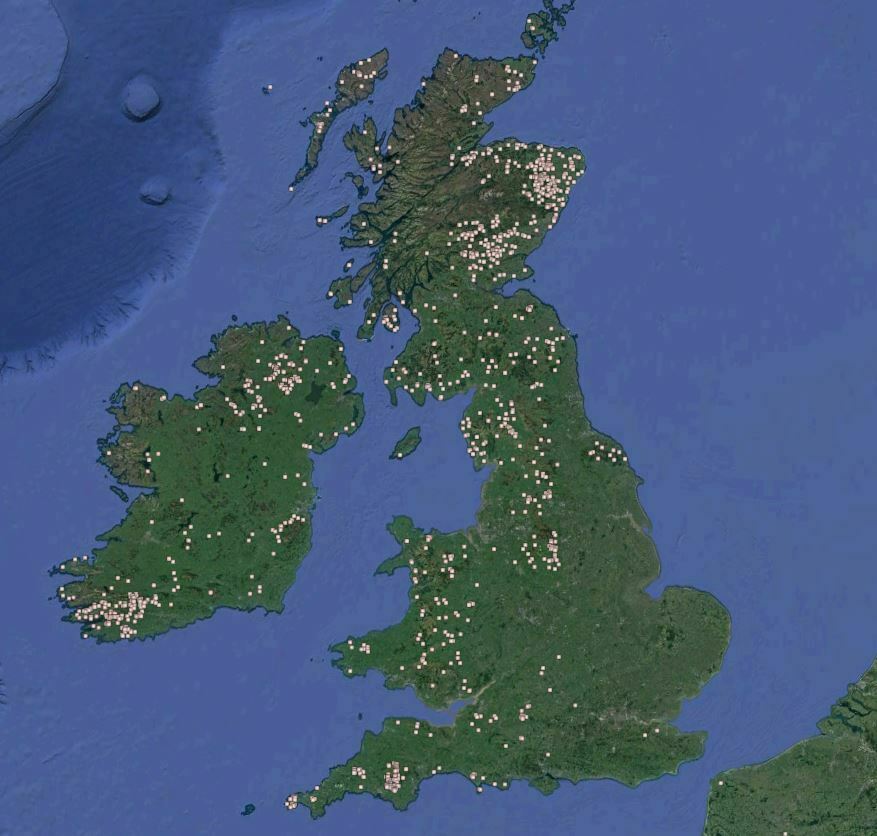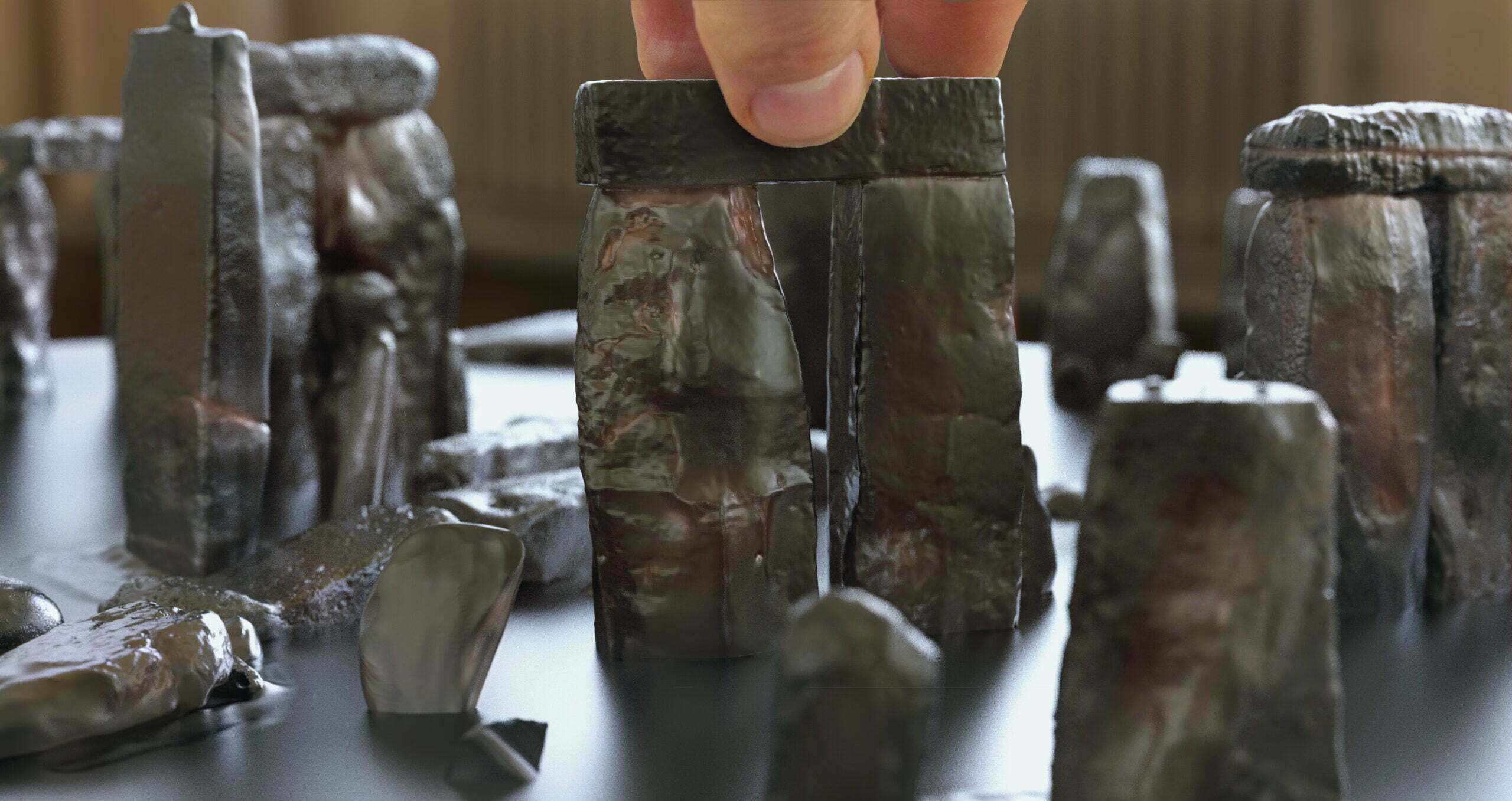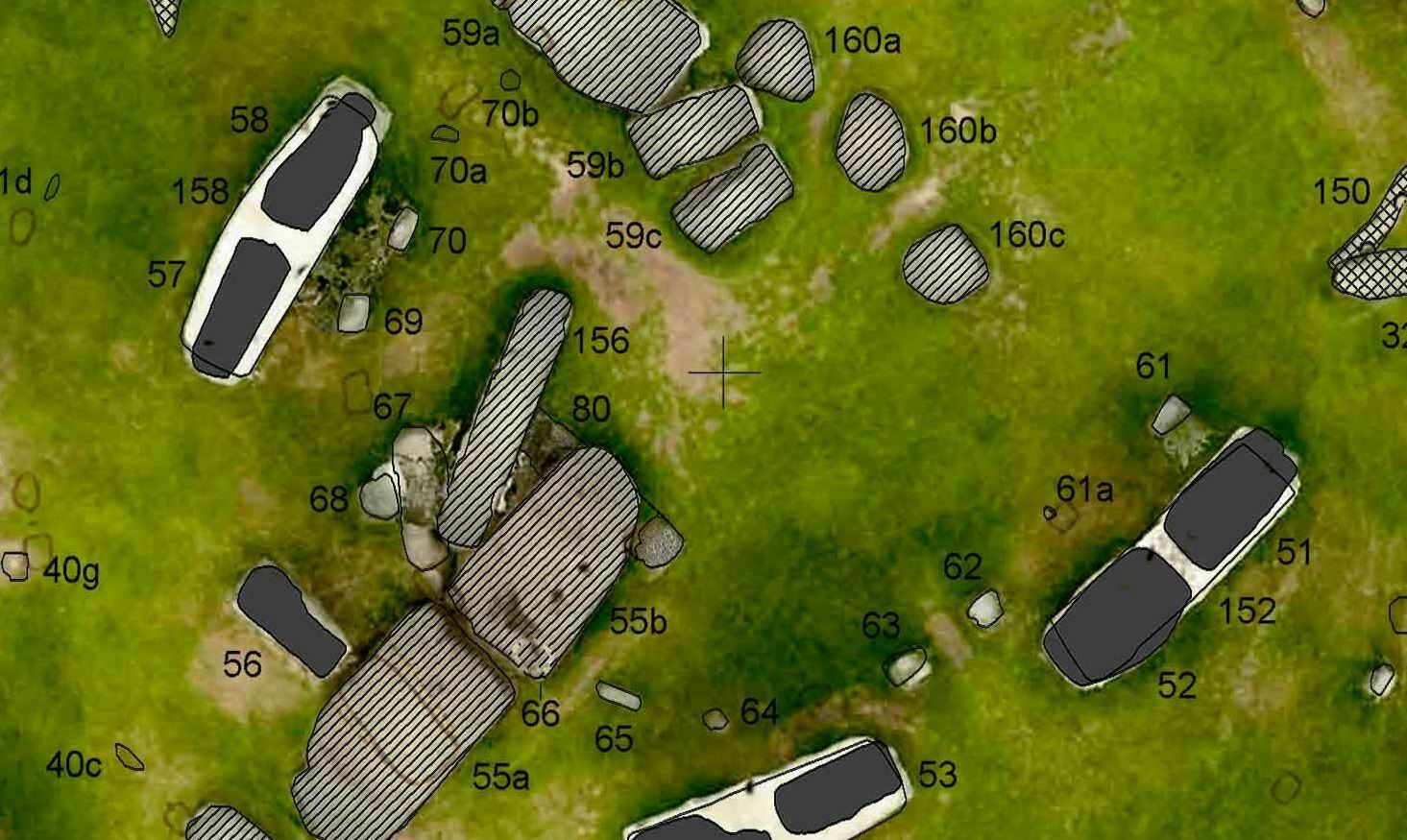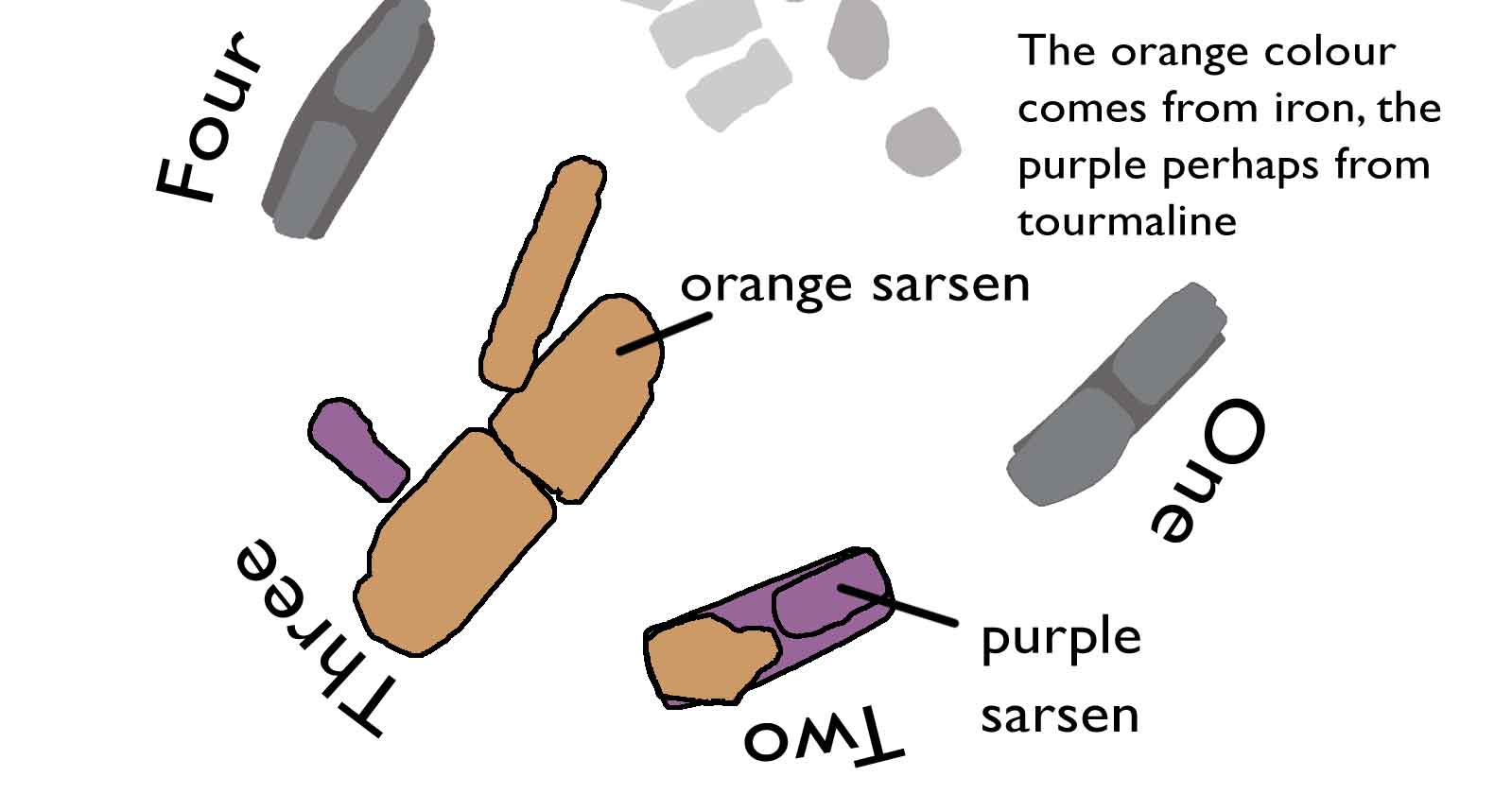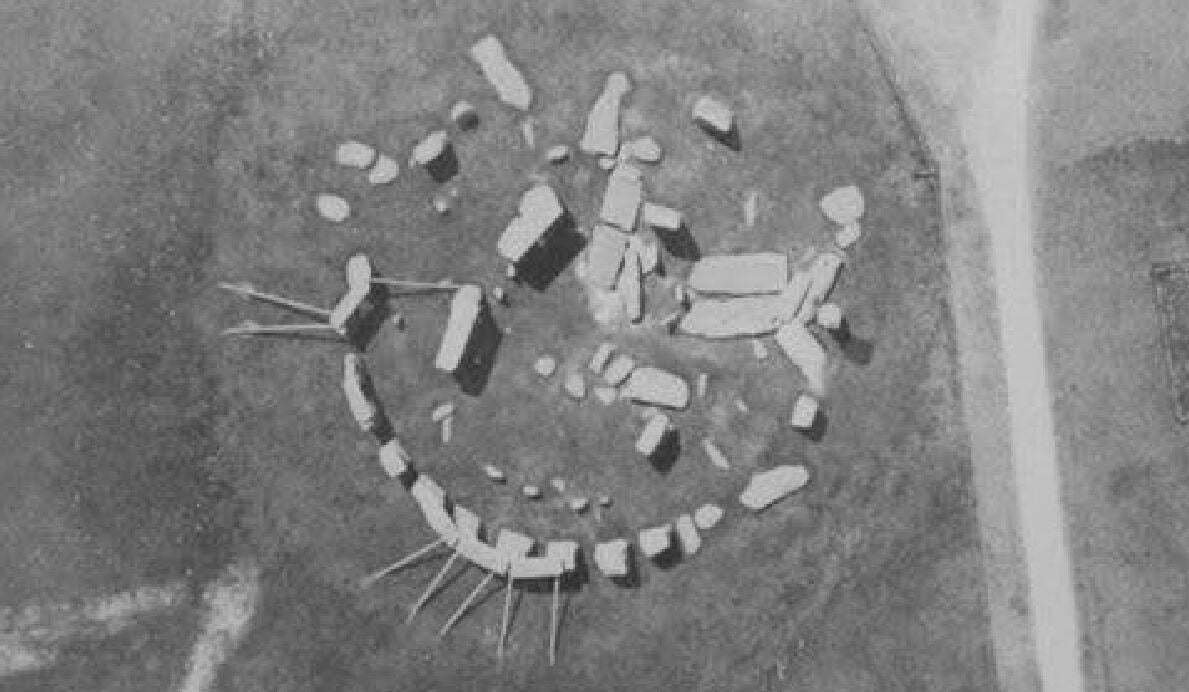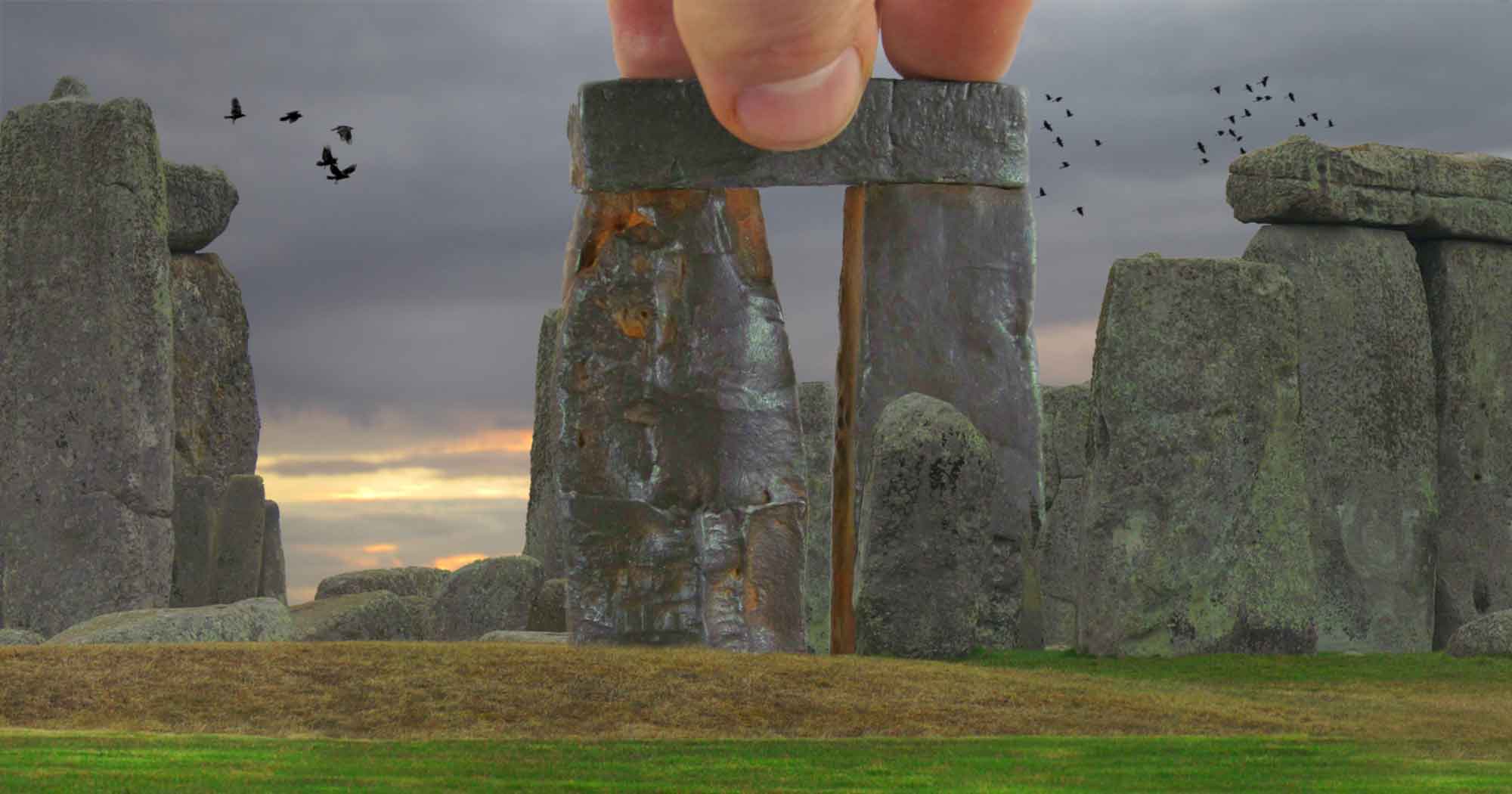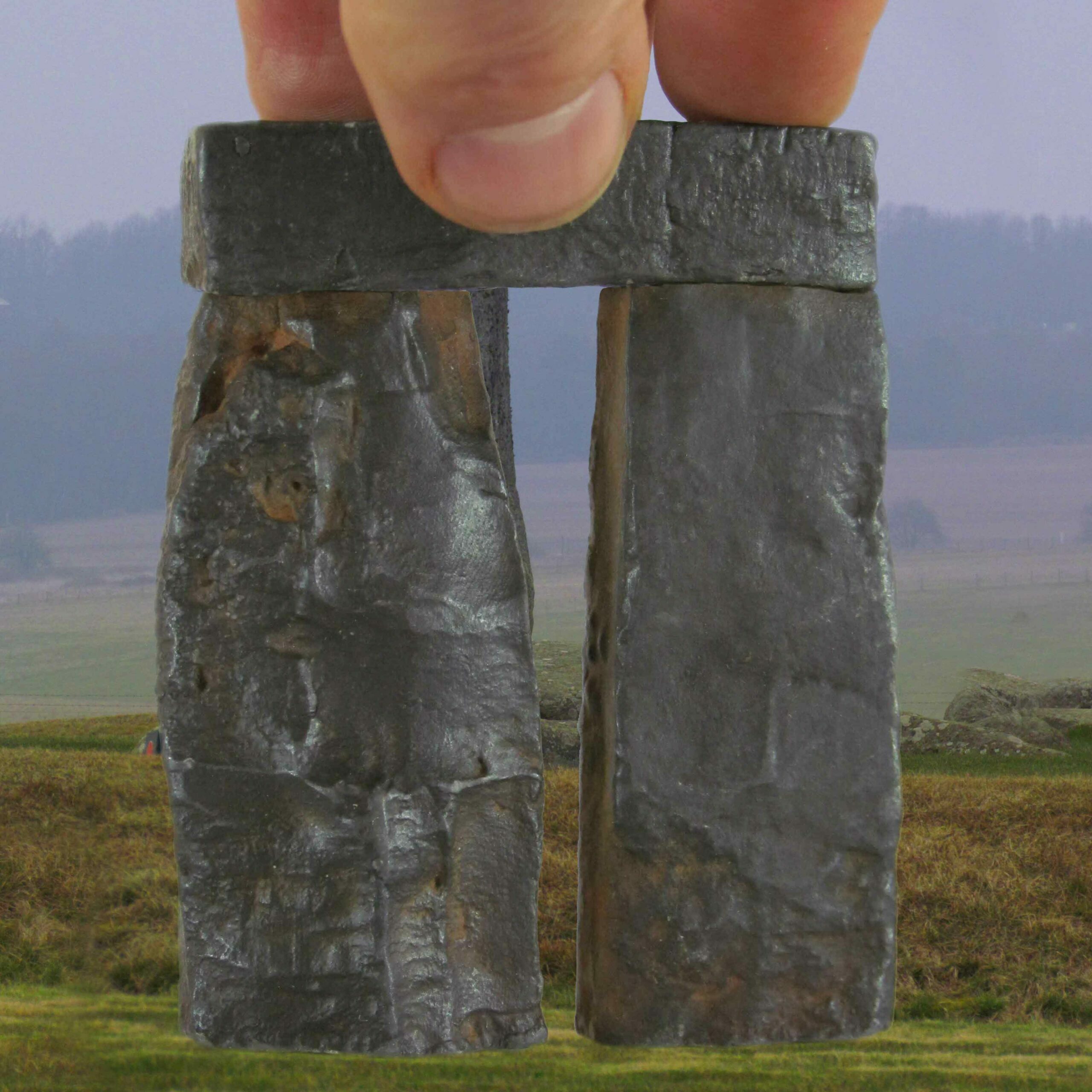There is a 100-year-old, neverending question of was it: Neolithic man or glaciers who moved the bluestones from West Wales to Wiltshire. Continue reading “Bluestones. Glacier or man?”
76 and 35th scale models of Stonehenge
To compare the sizes of the Stonehenge model full set. These are renders from the models, comp’d in Photoshop.
- 76th scale model miniature is 8.3cm or 3.3 inches high (T2) x 59cm or 23.2 inches in diameter.
- 35th scale model replica is 18cm or 7 inches high (T2) x 128cm or 50.4 inches in diameter.
- The real thing is 632cm or 20 feet 8 inches high (T2) x 4480cm or 147 feet in diameter – around 10% further out than the outer stone circle to contain the fallen stones, too.
Large map
Of the numbered stones, the missing stones overlayed onto an aerial photograph. I have a printed copy of this handy at all times. Perhaps you’d want to bookmark this permalink for the file http://stonehen.ge/bgmap.
Fingerprinting the sarsens
There are at least two types of sarsen at Stonehenge. These guys, a professor and a doctor, are going to fingerprint the debitage and the still ‘wild’ sarsens around and about south England to connect the dots.
Sticks and stones
One of the completed models I am to make is of the present view, naturally. But also two versions when it was in ‘disrepair.’
- One before the 1901 straightening of Stone 56 and
- another version around 1902 when long wooden props were placed around the outer circle.
Built by giants
Long, long ago Merlin built Stonehenge using giants. Here is the clear photographic evidence. ‘The camera never lies.’
Not Spinal Tap
So, I thought I’d mock up a fake view of the prototype model on grass, with fingers for scale. It reminds me that, of course, Stonehenge was built by giants. Some say under the instruction of Merlin, others just to play skittles.
